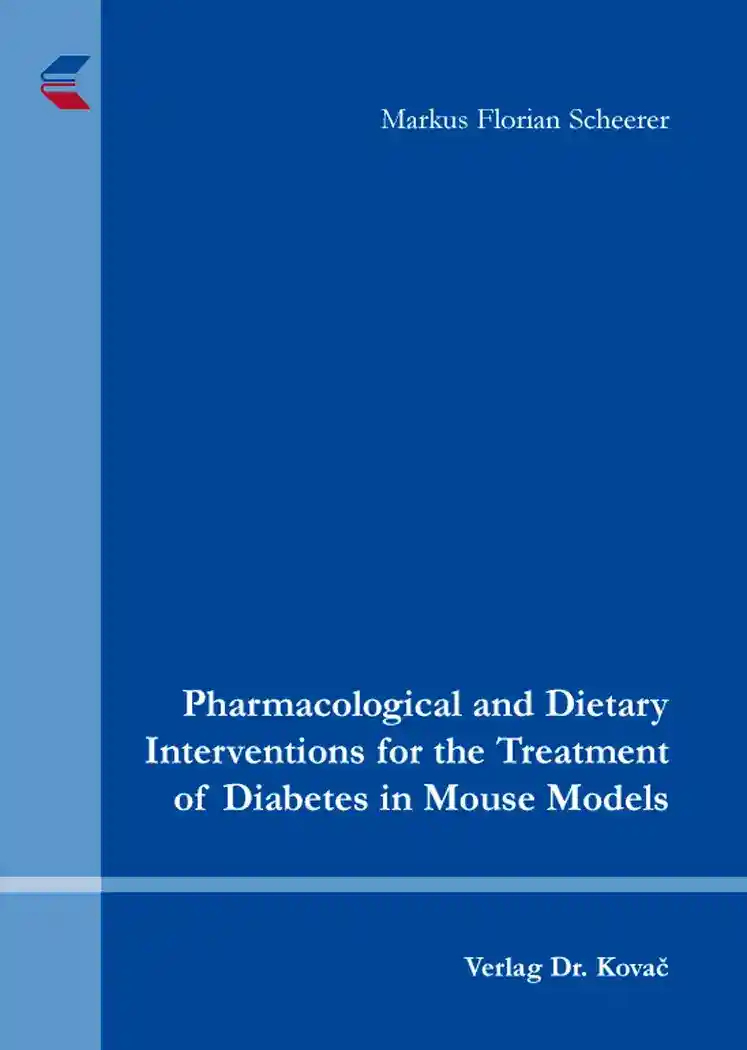Markus Florian ScheererPharmacological and Dietary Interventions for the Treatment of Diabetes in Mouse Models
- in englischer Sprache -
HIPPOKRATES – Schriftenreihe Medizinische Forschungsergebnisse, volume 94
Hamburg 2015, 234 pages
ISBN 978-3-8300-8443-3 (print) |ISBN 978-3-339-08443-9 (eBook)
About this book deutschenglish
In this book, we evaluated the use of a combination of the biguanide metformin and the sodium-dependent glucose co-transporter 2 inhibitor AVE2268 as a pharmacological intervention that does not target pancreatic ß-cells. Metformin is known to reduce endogenous glucose production and facilitate glucose uptake into tissues, whereas inhibition of sodium-dependent glucose co-transporter 2 shunts an overload of circulating glucose out of the body via urine. The aim of this combination treatment was to facilitate glycemic control in type 2 diabetes and as such preserve endogenous ß-cell mass.
The glucose lowering properties of metformin and AVE2268, either alone or combined, were assessed under both acute (2-4 hours) and more prolonged (2 weeks) regimen and this in two rodent models of type 2 diabetes, the db/db and TallyHo mouse. Metabolomics, proteomics and gene transcripts were measured in various tissues and body fluids of db/db mice after both acute and subchronic treatment.
Considering that male diabetic TallyHo appeared to have lost their ability to burn carbohydrates in a diurnal cycle, we also investigated the impact of a diet devoid in carbohydrates as a potential diet intervention to maintain glycemic control. These studies show that a reduction in external carbohydrate sources improves hyperglycemic control in TallyHo mice and helps to preserve a more normal islet morphology.
Last but not least, a new MODY mouse model with a single point mutation in the Ins2 gene was studied as a prelude to test the pharmacological interventions in a MODY mouse model as well. Here, we observed striking similarities to the already described Akita and Munich Ins2 mouse models. As such, we have established that each of the three existing disulphide bridges in mature insulin is absolutely required for proper glucose homeostasis.
Keywords
AVE 2268BiologieDB/DBInsulin MutationMedizinMetforminPharmaziePhenotypingSGLT-2 InhibitorT2 Dibaetes Mouse-ModelsTransciptomicsIhr Werk im Verlag Dr. Kovač

Möchten Sie Ihre wissenschaftliche Arbeit publizieren? Erfahren Sie mehr über unsere günstigen Konditionen und unseren Service für Autorinnen und Autoren.
